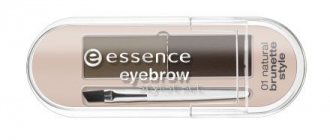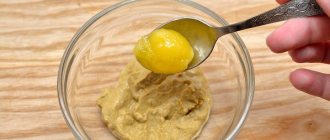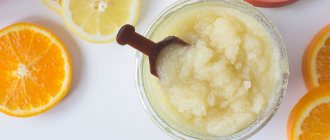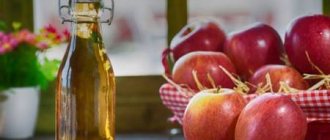Why does the skin on the heels become rough?
- constantly being in a standing position (for example, due to the type of service);
- lack of basic foot care (pedicure);
- lack of minerals in the body;
- dehydration;
- difficulties in the functioning of the thyroid gland and the entire endocrine system;
- excess weight, which puts a lot of stress on the legs;
- walking barefoot;
- malfunctions of the urinary system (in particular the kidneys);
- fungal infection;
- lack of certain vitamins, namely group B, retinol, tocopherol;
- dry skin in the summer season;
- Constantly wearing tight or closed shoes, high heels.
In most cases, the skin on the feet becomes dry due to walking without socks or wearing tight or non-breathable shoes. Everything can be solved by simply changing your shoe wardrobe; it also doesn’t hurt to remove dead particles on your heels with pumice once a week.
Dry heels: cause
Girls love to show off their beautiful legs. On the street, on the beach, in the office, at home - anywhere. However, dry heels can significantly spoil the mood and force beauties to wear closed shoes. The reasons for this unpleasant phenomenon may be the following factors:
- wearing uncomfortable high-heeled shoes;
- lack of vitamins A and E, which affect the condition of the skin;
- fungal infections (in this case, in addition to dryness and cracks, there may be a change in skin color);
- improper foot care and neglect of personal hygiene rules;
- disturbances in the functioning of the endocrine system.
Folk ways to soften feet
There are many recipes that are presented for everyone to see. You have a great opportunity to soften your heels at home.
- Salt with ether.
Fill a bowl with warm water (2 liters), add 2 tablespoons of salt (preferably sea). Pour in 10 drops of patchouli, rosemary, geranium or eucalyptus essential oil. Wait for the water to cool to room temperature. Lower the legs and steam them for a quarter of an hour. - Lemon.
Lemon powder works great on corns and similar cosmetic defects. But it is safer to use fresh lemon. Make porridge from large citrus by passing the fruit through a blender. Apply to gauze and tie to heels. Leave it overnight or at least leave the compress on for 3 hours. - Vinegar.
To soften the skin in the foot area and remove dead scales, use natural vinegar (preferably apple cider vinegar). Soak a cosmetic sponge in it, apply to the heels and secure. Put on your socks and go relax. Wash your feet in the morning. - Soda.
Baking soda based foot baths are extremely effective. In addition to noticeable softening, you will carry out comprehensive disinfection and prevent fungus. Stir 20 gr. loose powder in 1 liter. warm water, lower your feet and wait a third of an hour. Then perform a regular exfoliation to remove rough skin particles. Rinse the legs and lubricate them with targeted cream. - Onion.
The juice of the bulbs copes well with corns, rough areas, and calluses. Plus, onions disinfect, but after using it, an unpleasant odor often remains. Mash 2 pcs. into the porridge, apply to the heels and wrap with bandages. After a third of an hour, wash your feet and apply lemon juice to eliminate the unpleasant odor. - Natural oil.
Perhaps the most effective remedy to date. Take any natural oil, be it sea buckthorn, olive, corn, peach or almond. Warm it up to 35 degrees, rub it into your heels and put on cotton socks. Wash your feet in the morning. - Chamomile.
Take chamomile tea bags or regular dried chamomile flowers. Mix a handful of raw materials with 2 liters. boiling water, let brew for 20 minutes. Place your feet in a basin with this mixture and wait for at least a third of an hour. Additionally, you can equip this bath with garlic cloves for disinfection. - Soap with soda.
Take a small block of tar pulp, grind it with a grater and combine it with a spoon of food water. Add a little water or oil to make the mixture thick. Rub your heels with it, wrap it in foil or cellophane, wait a third of an hour. After this period, rinse off and use foot lotion. - Milk with salt.
Milk quickly softens, but you can enhance the effect with salt. Heat 0.5 l. milk, combine with 30 gr. coarse salt, dip your feet into the solution. Wait about half an hour. - Cabbage with plantain.
Take 5 leaves of fresh cabbage and a handful of plantain. Wash and mash with a blender. Apply to the heels or surface of the feet, wrap with bandages. Wear warm socks and wait at least 5 hours. - Medicinal plants.
All herbs have a good effect on the skin, so it makes sense to use them. Choose sage with calendula, St. John's wort, and yarrow. For 2 l. water, you need to measure out a tablespoon of each raw material. Brew, cool to an acceptable temperature, dip the heels into the infusion. Wait at least 20 minutes. - Vitamins in ampoules.
Mix 2 ampoules of vitamin E (tocopherol) and vitamin A (retinol). Apply the product to the skin of your heels, rub well until completely absorbed. Put on your socks and go to bed. There is no need to wash off this product after waking up in the morning. - Starch with yolk.
Mix 20 gr. starch, 25 ml. lemon juice and egg yolk. Bring the components to a homogeneous substance. Distribute the mixture over the skin of your heels and wrap your feet with parchment. Wear thick socks. The procedure is carried out before bedtime. When a new day begins, wash off the product and moisturize your skin with cream. - Potatoes with milk.
Combine mashed potatoes with country milk. The result should be a creamy mass. Distribute the product over your feet, wrap and rinse after waking up. As an alternative, you can grate the raw root vegetable and combine it with butter and egg yolk. Next, the procedure is carried out according to the standard scheme. - Retinol and calendula.
Combine a vitamin A capsule with a small amount of calendula ointment. Treat problem skin with the prepared product. Wait a while for the composition to be absorbed. Put on your socks and go to bed.
Ointments and creams
Not everyone knows how to make soft heels. To quickly soften the heels of your feet at home, the use of ointments and creams is recommended.
Pharmacy ointments
The advantage of medications used to soften heels is their availability and extensive effect on the skin.
Your doctor will help you choose a nutritional or moisturizing medication. What should I put on my heels to make them soft? Among the best pharmaceutical emollients we recommend:
- Cream Zorka
- The power of the forest
Lubricate the heels with Zorka, which will moisturize the epidermis, nourish and heal minor cracks.
The ointment has a strong anti-inflammatory and antibacterial effect. To enhance the effectiveness of the medicine on the heels, after lubrication, it is recommended to wear cotton socks. Skin softening cream is applied before going to bed.
After use, take a break for 3 days.
If the heels of your feet have a hard skin surface, what should you do? At home, you can use the Forest Power ointment.
Thanks to this product, the skin will be saturated with oxygen, restored, and nutrition will improve. Apply the ointment, make light massaging movements along the entire plane of the foot.
Use a professional heel softener, this will increase the absorption of the drug and the deep penetration of the components.
You can use softening ointments for feet to coat your heels to make them soft at home.
Due to the influence of the components in the composition, such ointments help:
- Provide deep hydration
- Restore the skin
- Saturate with nutrients
- Eliminate roughened epithelium
Apply the following softening ointments to your feet:
- Doctor
- Sesderma
- Juniper – Nevskaya cosmetics
If you apply the Healer, the foot will quickly soften, calluses and corns will go away, and with them a feeling of fatigue in the limbs.
Since dry epidermis on the legs not only leads to a deterioration in the appearance of the feet, but also causes itching and provokes the formation of painful wounds. Thanks to the Healer, the skin of the heel will quickly soften, the skin will become smooth and soft, and the threat of developing cracks and various wounds will be reduced.
Lubricate the soles with the product at home once a day, before going to bed.
Making ointments with your own hands
Another way to quickly soften the skin on your heels is to make your own homemade ointments.
Homemade cream recipes:
- Mix 15 ml of cream for children or Vaseline and 2 drops of chamomile and lavender essential oil. Lubricate problems on the feet 3 times a day. Store the ointment in a tightly closed container.
- This ointment will help you quickly create soft heels. You need to beat one egg (yolk only), pour in 5 ml vinegar and 15 ml vegetable oil. Having chosen one of the options for preparing the heels - steaming or a regular bath with warm water, the product is applied to the feet. The leg is wrapped in film and a sock is put on. The procedure using homemade ointment is carried out from evening to night.
- Finely chop the onion and fry in vegetable oil. Then the oil is filtered, 250 ml should come out and 100 g is added to it. wax, a piece of propolis. The mixture should boil over low heat. When the wax dissolves, you need to keep the medicine on the fire for a couple more minutes. Pour the homemade mixture into a container; it should thicken.
- Melt 10 grams in a water bath. wax, 5 ml of cocoa and shea butter are added to it. As a supplement, to quickly eliminate the problem, add 5 ml of sea buckthorn and calendula oil.
- Melt 3 large tablespoons of fat in a water bath for 10 minutes. A teaspoon of calendula and celandine flowers is sent to it. In advance, the herbs are dipped in boiling water for a minute. The entire mixture should be boiled for about 30 minutes, it should not boil. The homemade ointment is then left to cool. Store in the refrigerator, apply ointment to the heels at night.
- In a glass jar, mix 20 ml of vitamin A with a 20 g tube of calendula ointment. The prepared composition is stored in the refrigerator. The treatment course with ointment takes 7 days. At the end of therapy, it is recommended to apply homemade ointments to the heels only 2 times a week. This cream has amazing quality - it quickly gets rid of cracked feet.
Hydrogen peroxide to soften heels
- This composition can be purchased without problems at any pharmacy. The product has a good disinfecting effect. Hydrogen peroxide is used for many cosmetic purposes. The composition perfectly softens rough skin.
- Peroxide copes with the task perfectly even in the most advanced cases. The composition also eliminates fungal infections. To prepare an effective remedy, you should combine it in a 30 ml container. peroxide and 160 ml. warm water.
- Soak a cotton sponge in the prepared solution and begin wiping problem areas for several minutes. You can also resort to baths. Pour into 2 liters. hot water 150 ml. peroxide. Keep your feet in the solution for about 10-12 minutes.
- As an alternative, a more potent solution should be prepared. Also take 2 l. hot water and add 30 g to the liquid. medium ground sea salt and 60 ml. peroxide. Stir the ingredients and take the bath for 6-8 minutes.
The skin on your heels can become rough for various reasons. Before you begin to troubleshoot problems, it is worth understanding the cause. After this, you should use effective recipes. As soon as you get rid of this kind of trouble, do not forget to systematically carry out preventive procedures.
Foot baths
You should start removing the rough layer of skin and calluses on the heels with foot baths. Such a simple and affordable procedure will help soften the stratum corneum of the epidermis, and you can easily remove corns after a pumice bath.
The best foot baths are:
- with a decoction of medicinal herbs;
- with soap shavings;
- with baking soda;
- with sea salt;
- with oils;
- with glycerin.
All these products cost pennies, and their effectiveness can be compared to salon procedures.
To make a foot bath, you need to fill a basin with hot water. Please note that:
- soap helps to quickly clean contaminated areas on the feet;
- sea salt is an excellent antiseptic. Take baths with sea salt if there are cracks in the heels;
- baking soda helps fight fungus;
- glycerin is an effective emollient;
- herbs and oils are universal helpers in foot care. Decoctions and oils of chamomile, calendula and celandine are especially useful.
Baths must be taken for at least 15 minutes. After the procedure, the heels are cleaned with a brush and pumice stone to remove the stratum corneum, which will soften well in water. After cleaning the heels with pumice, the feet are rinsed and dried, and finally, a nourishing cream is applied to soften the steamed skin.
To completely remove rough skin on the heels, baths should be taken at least twice a week for a month.
Possible cause: disturbances in the functioning of internal organs
Rough skin on the heels is not just a cosmetic problem. It happens that certain disturbances occur in the body - for example, in the functioning of the endocrine system, or there are not enough vitamins and minerals - in this case you need to consult a doctor and not self-medicate.
Fungus is also often the cause of roughening and cracking of the skin on the heels - this is a dermatological problem, and treatment must be specific.
If the only problem is that you forgot about taking care of your feet, then everything is simpler, but you will have to make an effort and show patience: one, two or even three procedures will not be enough - you need to care for your heels purposefully and systematically.
Compresses and masks
In addition to baths, special masks and compresses according to traditional cosmetology recipes help to remove the rough layer of skin on the heels. It is advisable to apply such compositions immediately after a steam bath, while the skin of the feet is soft.
Masks and compresses are applied for 15-20 minutes, after which the feet are rinsed and a nourishing cream is applied.
Yolk + lemon juice.
To prepare this mask, grind the raw yolk with 1 tbsp. l. lemon juice. It is useful to add 1 tbsp to the mask. l. vegetable oil (it is better to use olive oil). It’s great if you add a few drops of tea tree oil to the mask.
The mixed mask is applied in a thick layer to the feet and wrapped in film. After 15 minutes, you can rinse off the composition with warm water, dry your feet and apply a nourishing cream.
Glycerol.
If your heels are very rough, then pharmaceutical glycerin will help cope with this problem. Keep this mask on all night, wrapping your feet with film and wearing warm socks.
To prepare the mask, you need to buy glycerin in a bottle at the pharmacy. Usually the bottle is not completely filled. Add vinegar essence or regular apple cider vinegar to the bottle and shake it well. This mixture is applied to the feet after taking a foot bath.
Lemon.
Lemon is an excellent remedy that quickly helps remove the stratum corneum on the heels. The fruits are cut into circles and applied to the feet. Then the feet are wrapped in film and socks are put on. It is best to do this at night. In the morning, you can easily remove all the rough layers of skin with a pumice stone.
Onion.
Onions are an indispensable aid in foot care, despite their pungent aroma. You should pass the onion through a meat grinder and apply the pulp to your feet. The feet are tightly wrapped with film. Socks are put on top of the film. The mask can be applied at night. By morning, the skin will swell, and you can easily clean it with a pumice stone. Your heels will become unusually smooth and soft.
Honey + viburnum.
Ripe viburnum berries need to be crushed and mixed with honey. In this case, you need to take exactly 2 times less viburnum than honey. This mixture is used for compresses. The heels are lubricated with the composition, then covered with film and socks are put on. Honey perfectly softens corns, and viburnum juice promotes faster renewal of the epidermis.
Rye bread.
Rye crackers need to be soaked in warm fresh milk. The resulting pulp is used for compresses. The mixture is simply applied to the corns and left for 30 minutes. This method helps to quickly restore velvety skin.
TOP 5 products for the care of rough skin on the feet
Intensive Treatment and Moisturizer for Dry or Called Areas, Kiehl's
An intensive cream created specifically for the care of rough skin on the feet. The product is rich in natural shea butter, avocado and wheat germ. Thanks to these ingredients, the skin softens significantly, small cracks heal, and peeling goes away. Your heels become very soft, smooth and silky, as if you had just had a professional pedicure.
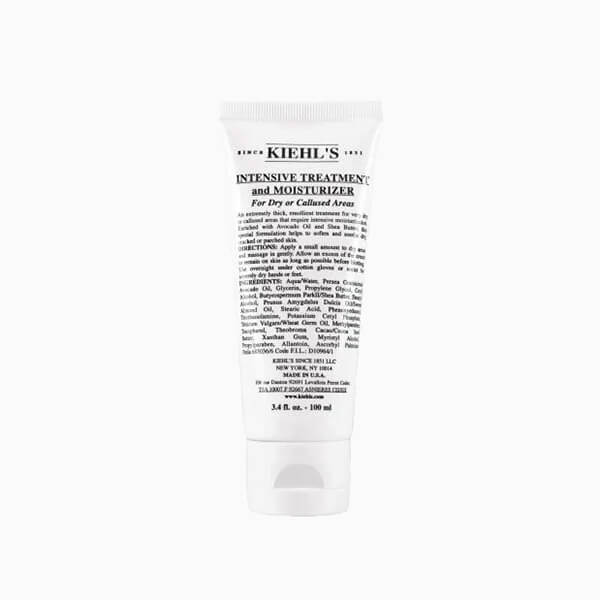
Kiehls Cream for Dry Rough Skin
Keratosane 30, Uriage
A special gel designed to eliminate thickening, calluses, peeling and dry feet. The product restores skin structure, soothes irritations and deeply moisturizes. After applying the gel, a slight tingling sensation may occur - there is no need to be afraid of it, this is a normal reaction due to the unique composition. The texture of the product is quite light, absorbs well and does not leave any sticky residue. The gel is suitable even for very rough foot skin.
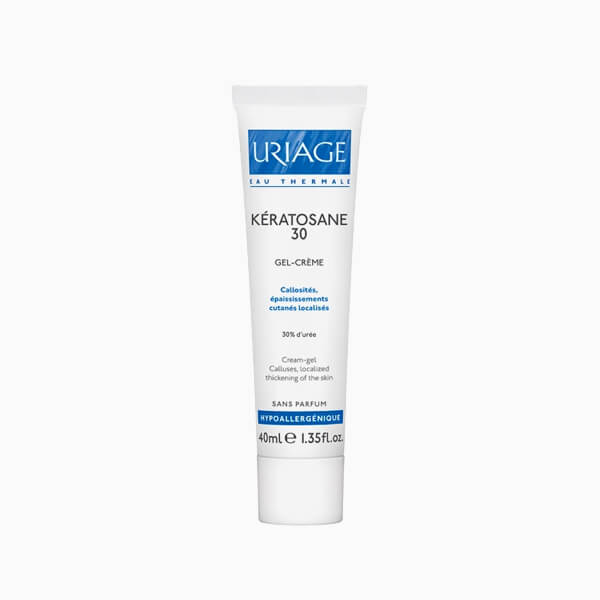
Gel for rough skin Uriage
Baby Silky Foot One Shot Peeling, Holika Holika
In just seven days your feet will be like new. All thanks to active ingredients (plant and vegetable extracts, alpha acids), which will make the skin renew itself and intensively “shed its skin.” Peeling socks act very gently, stimulate the exfoliation of the stratum corneum and accelerate the regeneration of a new, smooth and delicate one. Healthy skin remains untouched. An additional property of the socks is their deodorizing effect, which eliminates unpleasant odors.

Foot peeling Holika Holika
Dear My Foot Scrub Cleanser, The Saem
A soft foam scrub is perfect for exfoliating rough skin on the feet. The product delicately cleanses the skin, removes impurities, provides micromassage, and improves microcirculation. Thanks to mint extract, the foam helps cool the skin, relieves the feeling of fatigue and heaviness in the legs. Pine and cypress extracts block unpleasant odors and also destroy pathogenic bacteria that can cause fungus. The foam has wound-healing, anti-inflammatory, antibacterial and soothing effects. The smoothness of the heels is ensured.

Foot scrub foam The Saem
Deadsea Mud Dermud Intensive Foot Cream, Ahava
Rich composition, rich texture, good restorative properties - this cream will take care of the rough and damaged skin of your feet. A complex of microelements extracted from Dead Sea mud allows you to quickly improve the appearance and quality of your skin. Sea buckthorn and shea butter saturate cells with beneficial components, have an anti-inflammatory effect and accelerate regeneration processes. The cream prevents further dryness and can be used daily.
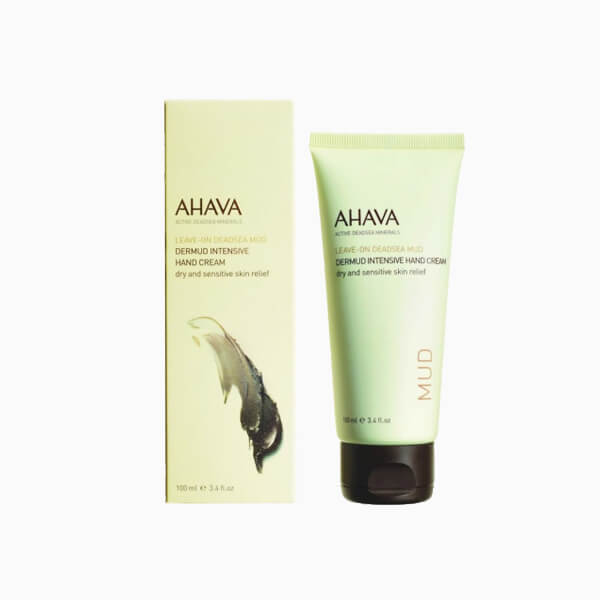
Active foot cream Ahava
Oil wraps
In addition to masks, after taking steam baths, you can pamper your feet with an oil compress. It is also advisable to do oil wraps at night.
For oil wrapping, cotton socks are soaked in vegetable oil. You can use flaxseed oil or olive oil. The soaked socks are put on the feet, and the feet are wrapped with film on top and another pair of socks made of natural thread is put on.
By morning, the skin on the feet will be deeply softened, and it will be possible to remove the entire rough layer with a pumice stone almost effortlessly. If necessary, the procedure can be repeated after a couple of days. If your feet are very rough, you will need to undergo a course of procedures over the course of a month.
Cleaning your feet with aspirin
Some home recipes suggest off-label use of medications. For example, regular aspirin, which perfectly softens the skin, will help remove corns.
The effectiveness of aspirin in the fight for softness and smoothness of heels is due to acetylsalicylic acid in its composition. This substance is very often used for peeling.
Aspirin will help cope with the following symptoms:
- dry skin;
- cracked heels;
- corns;
- painful sensations.
To quickly get your feet in order, you only need 10 aspirin tablets. The drug should first be crushed to a powder state and then mixed with 250 ml of ethyl alcohol. You still need to add 1 bottle of iodine to the resulting solution. This mixture can be stored in a dark place for a week.
The resulting liquid is used to make foot lotions. To do this, a gauze napkin is soaked in the mixture and tied to the heels. It is better to keep the lotion all night. In the morning, the remnants of the product are easily washed off with water, and the feet are treated with pumice. After the procedure, the skin must be lubricated with a nourishing cream.
There are several rules that are very important to follow in order to maintain the beauty and tenderness of your feet.
It is best to start cleansing your feet in the evening. Well-groomed feet will rest well overnight and absorb all the beneficial components of the mask or compress. The active ingredients of the masks, left on the skin for several hours, will work very effectively.
If you need to remove corns, then under no circumstances should you use sharp objects. A razor or scissors can easily injure your feet, which can lead to the development of various inflammations.
It is very important to take care of your feet regularly. You can also use store-bought cosmetics, although no one doubts the effectiveness of folk recipes. An integrated approach to foot care will allow you to make your heels as soft as a child’s.
Collapse
How to remove rough skin from heels?
Take hot foot baths every day before bed. You can steam the skin in a solution of baking soda and sea salt, a decoction of St. John's wort, chamomile, calendula, and sage. Take a tablespoon of dry herb or mineral per liter of water. Keep your feet in the bath for 15-20 minutes. Then thoroughly rub the softened skin of the heels with a special grater or pumice stone. To enhance the exfoliating effect, you can use a scrub based on ground seeds, coffee, or seaweed.
Heels are cleaned of rough skin with a pumice stone or grater.
Apply a mask to dry skin twice a week after peeling. You can prepare a homemade composition using one of these recipes:
- Mix the egg yolk with 5 ml lemon juice and 5 ml olive oil.
- Combine olive oil and honey in equal parts.
- Grind the pulp of any sour fruit in a blender. Add the same amount of cottage cheese to the resulting puree. Mix everything.
The mask is applied to a bandage folded several times. The soaked fabric is applied to the heel and fixed by putting on a sock. After 20 minutes, the composition is washed off with warm water.
Due to uncomfortable shoes, lack of vitamins and improper care, the skin of the heels and feet becomes very rough. For many, rough skin on the heels is a very pressing problem even in winter. But making heels as soft as those of a small child is very simple. Available home remedies and cosmetics and special procedures will help.
Preventive actions
Preventative measures to maintain healthy skin on your feet:
- wearing comfortable shoes (alternate shoes with and without heels, avoid uneven insoles and shoes made of materials that do not allow air to pass through);
- using nourishing foot cream every evening before bed, enhancing the effectiveness of the product with cotton socks;
- boosting immunity with vitamin complexes;
- treating the dermis with scrubs 2 times a week;
- do not use a razor to trim dead skin;
- Don't wear someone else's shoes.
Treatment of rough skin on the legs is indicated only for fungal infections and psoriasis. For this purpose, antifungal and antihistamine drugs are used, which are selected by the attending physician based on the clinical picture and the pathogen. The allergic reaction goes away after eliminating the irritants. Bepanten and Panthenol are indicated to relieve symptoms.
Perfect heels are a source of pride for any woman. Smooth, delicate leather on the heels allows you to appear barefoot on the beach and wear open shoes without embarrassment. In addition to aesthetic pleasure, the skin of the feet is a kind of indicator of health.
The appearance of calluses, corns, cracks, hyperkeratosis and, as a result, dry heels indicate disturbances in the functioning of the body.
Rough and dry skin on the heels is in most cases a cosmetic problem that develops as a result of poor foot care or wearing poor-quality tight shoes. Pathological conditions develop in the following diseases:
- diabetes mellitus;
- lack of vitamins;
- dermatoses of an allergic nature;
- psoriasis;
- hormonal disorders in women during menopause.
To achieve successful results from foot care, it is necessary to eliminate the likelihood of painful skin conditions. By contacting a dermatologist, a histological examination of the rough skin will be performed.
If a pathology is detected, the doctor will identify the cause and prescribe treatment. While adhering to the doctor’s recommendations, you also need to take careful care of your feet. Without appropriate therapy, rough skin due to diseases will reappear.
If ugly skin on your heels is the result of a careless attitude towards yourself, cleansing procedures will quickly give a good effect. To do this, it is not necessary to go to specialized salons; careful care at home is enough.
Video: Remove cracked heels at home
There are many reasons why rough skin appears on the heels. Among them are the following factors:
- Metabolism is disrupted.
- Diabetes.
- Thyroid diseases.
- Hormonal disease.
- Avitaminosis.
- Lack of vitamins E and A.
- Fungus.
- Biochemical skin disorders.
- Tight, narrow shoes.
Calluses on the feet are usually caused by uncomfortable shoes. Poor quality material, inflexible soles, incorrect insoles - all this leads to the formation of hard calluses on the toes. Quite often, calluses form while wearing new shoes. It all starts with rubbing with uncomfortable shoes. A painful bubble with liquid appears at this place. After the fluid leaks out, a dry, rough area (callus) forms. If no treatment measures are taken in time, the callus on the fingers will dry out, become rough and turn into a thick layer of dead skin, in other words, a dry callus which is characterized by the presence of a root.
Corns are also a type of callus on the fingers and heels. Occurs due to wearing tight shoes. Corns cause uneven pressure on the foot while walking. For example, if a woman prefers to wear high-heeled shoes, then corns form at the base of the toes. In this case, daily procedures to remove this problem will not lead to a positive result. You just need to change your shoes to eliminate the disease. It is recommended to treat the newly formed callus with hydrogen peroxide or furatsilin solution, applying a special callus plaster on top. A burst callus is a small wound that is hidden under a bubble of skin. It must be protected from pathogenic bacteria and dirt. It’s a good idea to apply an antiseptic to the callus after a few hours and cover with a band-aid. At home, you need to peel off the patch, because the callus needs to dry out. Until the wound has completely healed, it is necessary to avoid visiting the pool and bathhouse.
Method number 1: hydrogen peroxide
Hydrogen peroxide is an affordable, inexpensive product that can be sold at any pharmacy without a doctor's prescription. It is mainly used to disinfect damaged skin. Antiseptic and exfoliating properties in combination give excellent results when cleaning the skin of the feet.
For a cosmetic procedure, it is necessary to prepare a special solution, which includes 5 tbsp. spoons of 3% hydrogen peroxide and 2 liters of hot water. For ease of use, you can choose rubbing or foot baths.
In any case, before the procedure, it is advisable to steam dry skin on the heels to achieve maximum effect. For rubbing, you can take a cotton pad or cotton cloth and, moisten it in a weak solution of hydrogen peroxide, clean the entire skin of the feet on both legs.
To do this, you need to pour the resulting mixture into a clean bowl and place your feet there for 10 minutes. At the end, the skin of the feet is cleaned with a pumice stone or a file, and then lubricated with a rich nourishing cream.
The number of procedures will depend on the condition of the feet; usually the full course can take up to one and a half months. Once every 3 days is the optimal frequency to achieve good results; more intensive use will only dry out the skin.
Having achieved smooth skin on the feet, the ideal condition must be maintained regularly. The skin of the feet is subject to constant pressure and friction while walking under the weight of its own weight, so it is more vulnerable than other areas of the body.
Hydrogen peroxide will become an indispensable assistant in the fight for healthy heels.
Method number 2: Epsom salt
Epsom salts are great for removing rough skin on your heels. Bitter salt can be purchased at a pharmacy; its other name is magnesium sulfate. A unique chemical compound of sulfur and magnesium gives the skin a radiant appearance and nails a strong structure.
Epsom salt, interacting with the skin of the feet, cleanses, softens and has an antibacterial effect.
In addition to its cosmetic benefits, magnesium sulfate relieves swelling and fatigue after a long day on your feet. Sulfur with magnesium is effectively used to combat unpleasant foot odor.
Cleansing procedures for dry heels are carried out in the form of warm evening treatments or Epsom salt crystals are used as a scrub. A handful of bitter salt is rubbed into the surface of rough heels for several minutes into pre-steamed skin. After the procedure, the skin is washed with warm water and generously lubricated with nourishing cream.
Cleaning rough heels with a salt solution at home is easy and pleasant. Algorithm of actions:
- Add a pinch of Epsom salt to hot, clean water and stir until completely dissolved.
- Place your feet in the solution and steam your heels for half an hour, keeping the mixture hot.
- After finishing, remove the thickened skin mechanically with a pumice stone or brush.
- We wash our feet with fresh water and dry them with a clean towel.
- Lubricate the skin of the feet with cream. To enhance the nutritional effect, you can add 3 drops of an oil solution of vitamins A and E to the cream.
In just a few days, a good result will be noticeable. The course is completed when the desired result is achieved, on average it lasts from 1 to 2 months.
Method No. 3: onions
How to clean rough skin using onions? There are onions in every home. Not everyone knows that it can be used not only for cooking, but also for cosmetic procedures.
Fresh onions are a source of calcium, fluoride, zinc, magnesium, as well as essential oils. The high content of these elements makes ordinary onions a bactericidal agent that improves the condition of the skin epithelium and has a cleansing effect.
When applied topically, onion regulates the activity of sweat glands and eliminates unpleasant odor.
To remove rough and dry skin on the heels, cut a large onion in half and place it on top. Then, on top of the onion, you can wrap your feet with cling film and put on socks made from natural materials.
Another method is to use chopped onions. The mushy mass is applied to gauze folded in several layers. The bandage is applied to the heels; the time of contact with the bow should be no more than 30 minutes.
Onions, as a means to remove rough skin, are suitable for everyone. Try not to overdo it and perform manipulations no more than once every 3 days.
Daily use can lead to inflammatory processes as a result of irritation of the sweat glands. For the fastest effect, try to choose shoes made from natural materials that can allow air to pass through.
Liquid blade based products
The modern market is replete with professional cosmetic products for pedicure based on ZhL:
- biogels;
- express skin softeners;
- creams;
- foam.
These products are characterized by approximately the same set of components, represented by liquid soap, biogel, and moisturizing creams in various proportions. Biogels are the most aggressive of the indicated preparations, since they contain a larger amount of acids, and therefore, with their help, removing dead skin tissue from the heels will take you a matter of minutes. Biogels are usually used for “sagging” heels.
Socks for pedicure
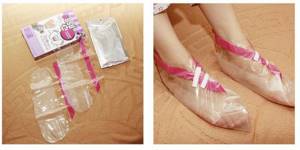
In recent years, pedicure socks that look like medical polyethylene shoe covers have become very popular. They are based not on fruit, but on lactic acid and plant extracts, which have antiseptic, anti-inflammatory, and medicinal properties. The use of such socks not only cleanses the skin of the heels, but also helps to significantly accelerate regenerative processes in the cells of the epidermis, slow down the aging process and restore water balance.
Method #4: Baking Soda
Sodium bicarbonate has long been known for its unique skin cleansing properties. The softening effect will prepare rough skin to remove unwanted growths.
Antiseptic properties will remove pathogenic bacteria and fungi, which cause not only changes in the skin, but also an unpleasant odor. The anti-inflammatory effect will promote healing and regeneration of the skin of the feet.
How to properly clean your heels from rough skin using baking soda at home? There are several folk recipes:
- Dry mixture of soda and soap. A small amount of soap should be grated on a coarse grater. Add a teaspoon of soda to the crushed soap and apply to the skin in the heel area. Wrap in film, put on socks and leave the compress for 20 minutes, then clean your feet with pumice and lubricate with nourishing cream.
- Foot. Add a little soda to hot water and take baths for 15 minutes until the solution remains warm. After steaming, wash your feet with clean water and mechanically remove the rough skin on the heels. After softening with cream, be sure to wear warm socks.
- Soda with milk. An excellent effect can be achieved by using milk instead of water. The use of dairy products to nourish and soften the skin has been known since the ancient times of Egyptian beauties. with milk are carried out according to the same scheme.
- Olive oil and soda: mix 15 grams of soda with 5 ml of olive oil and rub into rough skin. The abrasive properties of soda in dry form act like a scrub, and the oil softens the skin and makes the cleansing process more gentle.
Traditional medicine recipes
- After thoroughly washing your feet, apply half a fresh onion to each heel, put on socks made of natural fabric and leave for an hour and a half. After this time, the skin will become very soft and will easily yield to pumice. This method will work even in the most severe cases if it is carried out every three days.
- To get rid of rough skin on your feet, regular soap and soda will help. The soap needs to be crushed (you can even grate it), add a teaspoon of soda to it and apply this product to clean feet. Then the feet should be wrapped in film or tightly wrapped in ordinary plastic bags.
You need to keep the mixture for about twenty minutes, and then remove the dead skin with a brush or file and rinse your feet in warm water.
In principle, this problem can be avoided. Just choose quality shoes and keep them clean all the time. And in the summer, avoid shoes with open heels, as dirt and pebbles lead to roughening of the skin of the feet.
Summer is ahead, which means that our legs will now be visible all the time. But what if you suddenly find that your heels are no longer as smooth as a baby's? How to clean your heels? What to do if your feet become rough, and how to even out the skin? How to clean rough heels at home? We will try to find answers to all questions.
If you do not properly care for your heels, the skin on them gradually dries out, becomes rough, one layer grows on another, and this is how you get rough skin growths on our feet.
Method number 5: natural honey
How to get rid of rough skin on your heels using honey. Honey is a natural antiseptic that combines an emollient and nourishing cosmetic to improve the condition of the skin of the face and body.
When cleansing the skin of the feet, to speed up the effect, use not pure honey, but a mixture of it with viburnum or prunes. When exposed to honey, rough keratinized layers noticeably peel off, releasing clean epithelium and eliminating inflammatory processes from the skin. Viburnum is a real storehouse of microelements that stimulate the growth of young layers of epithelial tissue.
How to easily and quickly remove rough skin from your heels using a compress:
- Crush 50 g of viburnum berries, after removing the seeds, and mix with half a glass of honey;
- Before applying, the paste should be heated in a water bath until warm;
- the mixture is applied to a bandage or natural fabric and applied to the heels;
- To obtain a compress effect, the legs are wrapped in cellophane and wrapped in a blanket for 30 minutes.
In a similar way, it is useful to use prunes instead of viburnum. A mixture of honey and prunes breaks down the thick dead skin layers of damaged skin, and acts as a chemical peel to remove rough skin on the heels. The skin begins to come off in large pieces, leaving the smooth surface of the feet free.
The advantage of this method is absolute safety and painlessness. Compresses with honey can be applied daily without harm to the feet. The duration of the course is extended until the desired effect is achieved.
Benefits of salon foot peeling
For it, special preparations are used that are able to penetrate into the deep layer of the skin, thus renewing the dermis. This procedure is effective for a long time. With the help of procedures offered by cosmetologists in the salon, you can protect your skin from the appearance of eczema, cracks and calluses.
The salon offers the following types of peeling: hardware, chemical and mechanical.
For chemical peeling, various acids are used; they are added to masks, powders, and gels. With this peeling, you do not need to use friction; with the help of fruit acids you can get rid of rough skin and remove cells that cause the skin to age faster.
There are also superficial peelings - almond, salicylic, glycolic, pyruvate, chemical-mechanical. The phenol procedure is a deep type of peeling, but it must be performed with extreme caution.
An innovative method is Garra Rufa peeling; special fish are used for this; they relieve us of dead skin. The saliva of fish contains enzymes that have a rejuvenating effect on the legs. This procedure is especially useful for those who constantly suffer from fungus, who have eczema, psoriasis, or who suffer from an allergic reaction. Fish are not allergens; they massage your feet and relax them.
Prevention of corns, calluses and rough skin of the feet
Having done a tremendous amount of work, you can achieve an amazing result. Smooth and healthy feet will delight and delight, but many people face the problem of rough skin appearing again and again. Having achieved the desired result, it is necessary to maintain the effect with preventive procedures.
Daily foot care allows you not to think about how to clean your heels of rough skin again. Mandatory evening dress includes:
- with medicinal herbs and essential oils;
- regular use of scrubs and fine-grained foot files;
- daily use of foot creams with vitamins A and E;
- using a personal towel to dry your feet.
Increased demands must be placed on shoes. Ideally, it will be made of natural materials and an anatomically correct last. In this case, the feet will be provided with air circulation, and the orthopedic padding will ensure proper distribution of the load on the foot when walking, eliminating the appearance of corns.
It should be added that daily work in caring for your feet will be rewarded with admiring glances from others when they see your feet.
Many girls and women cannot boast of soft and tender heels to the touch. Some people don’t pay attention to this, while others are trying to solve this problem. Today we will find out how to get rid of rough skin on your heels at home.
How to clean rough heels at home
If your heels can be helped by cosmetic care, there is no need to go to a salon and use a pedicure machine. You can remove callused heels by performing all the procedures at home, and now we will look at them.
Heel care is carried out in three stages - steaming, removing dead skin, and the final stage.
To remove rough skin on the heels, you need to steam it
The goal of the first stage is to soften the thickened skin of the feet for easier removal. Water must be heated to 38-40 degrees.
Heels are the same part of the body as the face and hands. Feet require careful care and attention. There are effective ways to help eliminate dry and rough skin at home.
Women's legs attract the attention of the opposite sex, which means they should always look perfect.
Open shoes often lead to rough skin on the heels, which is very visible from the outside.
Taking care of the condition of your heels is necessary and important. Some ladies can afford to go to a beauty salon every time, but some of us can’t afford it, which means we need to find an effective way to care for this part of the body at home.
To steam your feet at home you will need:
- bowl of hot water
- foot scrub
- towel
- pumice and foot file
The temperature of the water in the basin should not be scalding, it should be tolerable and favorable for the skin, without leaving redness. You can add any soap solution to the water: shower gel, bath foam or liquid soap, but this is not at all necessary. If you want to have a healing effect on your feet, try adding essential oil and chamomile flowers to the basin.
Home care for rough heels
If you decide to get rid of rough skin on your heels, then you should prepare yourself for a long process of dealing with this problem. Procedures should be carried out weekly, and if possible, then 2 times every 7 days. They consist of the following points.
Steaming
This is a must for removing rough skin. This item includes all kinds of foot baths. Below we provide recipes for their preparation. Note that the water in them should be approximately 37-40 degrees Celsius, and the procedure should take 20 minutes.
Removing rough layers of skin
For this purpose, you should use pumice or a brush with natural bristles. Please note that you cannot use a special metal brush, much less cut off the skin with a blade, otherwise you may get hurt, and then a sore will appear on your heel, which will take a long time to heal and will cause you discomfort while walking. This procedure should be carried out immediately after the bath. First you need to wipe your feet dry, and then treat your heels with a pumice stone or brush.
Hydration
After you have removed the top layers of rough skin, you should apply moisturizer to your heels. This will be the final stage of softening the epidermis.
Masks
In between removing rough skin, it is recommended to perform these procedures.
They will help make the skin soft and tender. You can perform them 2 times a week when you do not plan to remove the hardened epidermis. You will find recipes for these procedures below. How to get rid of rough skin on the heels:
regularly use foot baths, use softening or exfoliating masks and be sure to treat your feet with a special brush or pumice stone
conclusions
Dry skin on the heels, cracks - all this does not add beauty to your feet. Unfortunately, many women do not pay enough attention to this problem, which can lead to quite serious consequences. If you want to be on top in any situation, if you like to wear open shoes, and also if you want to become the queen of the beach, then your feet need regular and high-quality care. Do not neglect the rules of personal hygiene, monitor your health and nutrition, and regularly pamper your feet with herbal baths and natural peelings.
Many people suffer from the formation of gray plaque, tough layers of dead skin on the heels. Often this problem is associated with poor nutrition, wearing shoes with uncomfortable lasts, and lack of proper skin care on the feet. It is extremely important not only to regularly monitor the condition of the heels, soften the skin and remove hard layers, but also to take measures to prevent the formation of new plaque. Perhaps your body needs vitamins, you lack fat, you need to include more fruits in your diet.
First of all, it is important to deal with those layers of hard skin on the heels that have already formed. Over time, they will harden more and more, causing discomfort, increased sweating, and disrupting metabolic processes in tissues. In addition, such growths can cause pain and discomfort while walking, and the skin on the heels often itches. Some even begin to simply peel off pieces of old skin, risking infection. How to soften the skin on your heels so that your feet look beautiful again, become healthy and well-groomed? Use different methods, masks and baths. Be sure to take preventative measures as well. Then your heels will always delight you with their aesthetic appearance and will stop hurting.
Why does the skin on my heels become hard? We find out the reason and take action
First, try to determine what caused the dead growths on your heels in the first place. It is important to immediately outline an action plan so that in the future your skin looks good and your heels do not hurt. Pay more attention to the health of your skin and feet. It is possible that the problem was caused by several reasons at once. All negative factors must be eliminated, otherwise you will have to constantly clean off the unpleasant grayish layer from your heels, and it will form again. This is the wrong way, since the procedures are quite labor-intensive and traumatic. You need to take care of your heels and prevent changes in the skin structure in the future.
- Insufficient care.
Pay attention to your habits. Do you often use foot creams? Do you take relaxing baths? What soap do you use? It is important to constantly monitor your skin, including your heels. It is no coincidence that in stores you can see a lot of foot care products and creams. Baths also need to be done. They will help soften the skin, relieve irritation, and have a beneficial effect on the emotional state. You should have several recipes for foot baths, two or three types of cream. For example, in winter the skin especially needs moisturizing, and in summer you need to take care of relieving irritation and healing wounds. uncomfortable shoes - Uncomfortable shoes.
Consider whether your shoes can cause the formation of hard growths or calluses on your heels. Often, it is uncomfortable lasts, sandals with too high heels and flapping flip-flops with heavy soles that cause changes in the texture of the skin on the heels. Shoes should be fairly light and comfortable. Choose models that provide a good microclimate in the heat. Moccasins with a natural top and denim slip-ons wear well. When treating heels, it is best to avoid heels, heavy soles and shoes that are too tight. - Poor nutrition.
Watch your diet. The skin becomes dry, its upper layers quickly die when a person lacks vitamins E and A. If you wish, you can simply start drinking a special vitamin complex, but that’s not all. It is necessary to include butter, animal fats in the menu, and regularly eat meat, fish and seafood. A great option is to eat liver at least once a week. It must be fresh, and it must be cooked in the oven without overcooking. Apricots contain a lot of vitamin A. Eat fresh fruit regularly. Carrots, radishes, seeds and nuts, broccoli and spinach, as well as extra virgin olive oil will help provide your body with vitamin E.
Folk remedies for rough skin on heels
If you are thinking about how to get rid of rough skin on your heels using traditional methods, then below you will find recipes on how to do this.
Heel baths
Soda bath
Take:
- Soda - 1 tablespoon.
- Water - 1 liter.
Take the specified amount of warm water and dilute soda in it. After this, pour the composition into a small basin and immerse your feet in it. Keep them like this for 20 minutes, periodically adding hot water when you feel it cooling down. This bath is considered one of the most effective in the fight against rough skin on the heels. Soda softens the epidermis quickly enough and penetrates deep inside, which allows you to remove a fairly large amount of it in one procedure.
Milk bath
- Milk - 500 ml.
- Water - 1 liter.
Heat the milk as usual until it is hot, but do not bring it to a boil. After this, dilute the soap in it and add warm water. Next, pour the composition into a basin and immerse your feet in it. Keep them like this for 15 minutes, after which you can wipe them and treat them with pumice.
Chamomile bath
Prepare:
- Chamomile - 1 tablespoon.
- Water - 1 liter.
Instead of chamomile, you can brew St. John's wort, calendula or sage. All these herbs have a positive effect on the epidermis, making it tender and soft. Pour boiling water over the plant, put it on the fire and bring the broth to a boil. Next, remove it from the stove and leave for 15 minutes. After this, strain the product, pour it into a basin and keep your feet in it for 20 minutes.
Sea salt bath
You will need:
- Sea salt - 0.5 cups.
- Crushed baby soap - 1 tablespoon.
- Water - 1 liter.
Place sea salt and soap into boiling water. Stir the product thoroughly and wait a while until it becomes warm. After this, pour it into a basin and keep your feet in it for 20 minutes.
Heel masks
Mask with yolk
- Chicken yolk - 1 pc.
- Lemon juice - 1 teaspoon.
- Olive oil - 1 teaspoon.
Beat the yolk well until it becomes foamy. After that, mix it with warm oil, having previously heated it in a water bath, and with lemon juice. Place the mask on your feet and insulate them. Wait 20 minutes, then rinse your feet with warm water and treat them with nourishing cream.
Olive oil mask
Prepare:
- Olive oil - 1 tablespoon.
- Honey - 1 tablespoon.
Combine honey and olive oil and place them in a water bath. Hold the product until it becomes warm. After this, treat your feet with it, insulate them and leave for 20 minutes. When the time is up, rinse them with warm water.
From our article you learned how to get rid of rough skin on your heels at home. Please note that the listed methods will only be effective if they are used regularly. If you decide to perform only a few procedures, they are unlikely to help you. We have already said that this is a long process and if you regularly follow all the recommendations, you will achieve the desired result.
What to do if your heels get rough
This problem can be solved. You can go to the salon and undergo a course of European pedicure, paraffin therapy and other professional procedures. With due persistence, the result will not be long in coming. You can get by with improvised means:
Before going to bed, steam your feet in warm water. Dry with a towel and make a compress with apple cider vinegar. Secure it with film, put on warm socks and go to bed. In the morning, remove the compress and gently exfoliate dead cells with a brush or pumice stone. Do not use metal scrapers or blades! Then you need to rinse your feet and apply a nourishing cream. Repeat the procedure until the feet become smooth, then do it as a preventive measure once every two to three weeks;
Brew a full handful of onion peels with 2 liters of water. Leave for about an hour. Then you need to prepare a hot foot bath from the infusion: add a tablespoon of baking soda and table salt to it, soak your feet and keep until completely cool. Then pat the skin dry and apply raw yolk first, then any nourishing oil. Wrap up and leave overnight. Repeat every other day until the desired result is obtained;
Cedar resin helps with cracks on rough heels. The healing agent should be applied daily to problem areas at night, in the morning the skin should be rinsed and a nourishing cream should be applied. The procedure may darken the epidermis for some time, but after three or four procedures, the cracks will disappear, and the skin color will very soon become familiar.
Now you know why your heels become rough and how to deal with it. With regular proper care, your heels will become smooth and soft again. If, despite all efforts, this does not happen, consult a dermatologist; this problem may only be a symptom of the disease and will disappear after its treatment.
